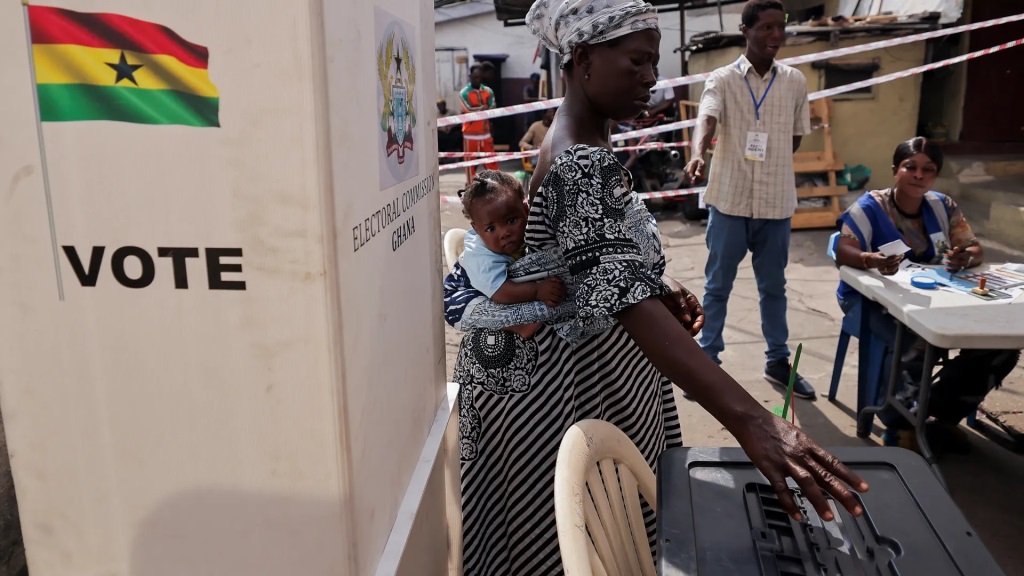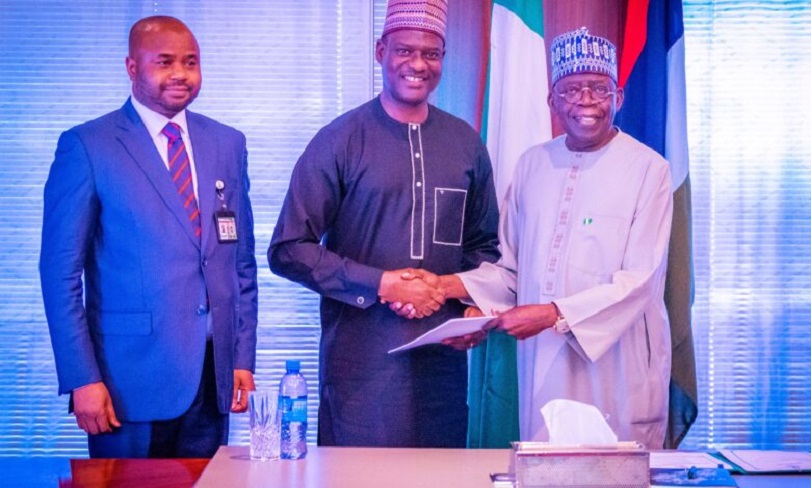Feature/OPED
Economic Diversification and Nigeria’s Feeble Attempts

By Jerome-Mario Utomi
It is no longer news that across the globe, there exists persistent call on nations, regions and continents to shift toward a more varied structure of domestic production and trade as it is not only a strategy to encourage positive economic growth and development but with a view to increasing productivity, creating jobs and providing the base for sustained poverty-reducing growth.
What has however caused concern is the paltry number of nations and leaders particularly in Africa as a continent that has keyed into such relentless calls.
Adding fillip to the above worry/claim is the well quoted World Bank Group report which among other observations noted that economic diversification remains a challenge for most developing countries and is arguably greatest for countries with the lowest incomes as well as for those whose economies are small, landlocked and/or dominated by primary commodity dependence.
It submitted that for such countries, economic diversification is inextricably linked with the structural transformation of their economies and the achievement of higher levels of productivity resulting from the movement of economic resources within and between economic sectors.
Take Africa as an example, aside its inability to diversify which has made it aid receiving continent, continually look up to continents such as; Asia, Europe and America for aid after almost 60 years of independence, the failure, in my view, explains why Africa as a continent despite being the second most-populated continent in the world (1.2 billion people), represents only 1.4% of the world Manufacturing Value added in the first quarter of 2020.
Also, the effect of the continent failure to diversify is signposted in the painful reality that out of about 54 countries that made up the continent, only South Africa qualified as a member of BRICS, an acronym coined for an association of five major emerging national economies: Brazil, Russia, India, China and South Africa.
While the piece laments this challenge, it is relevant to the present discourse to underline that this tragedy is well-rooted in, and has spread its wings in Nigeria as a country.
To illustrate this claim, as part of the transformation agenda, reports have it that former President Goodluck Ebele Jonathan through his Coordinating Minister, Dr Ngozi Okonjo Iwuala, now Director-General, World Trade Organization (WTO) emphasized the need for the diversification of the economy to promote inclusive growth and job creation.
The administration aimed at achieving the objective through investment in agriculture, housing and construction, manufacturing, aviation, power, roads, rail solid minerals and the information and communication technology (ICT) sectors by both government and the private sector. These sectors the report added would gradually transform the economy and create jobs in the process as well as move the economy in the right direction.
Sadly but expected, the ideas and pontifications, like those of his predecessors, ended not just in the frames but as a mere declaration of intent.
Nevertheless, before getting into the nitty-gritty of economic decays in the present government particularly its long history of inabilities to come up with, and implement a well-foresighted plan or execute a shift toward a more varied structure of domestic production and trade, let’s cast a glance at January 2020 policy comment by one of the well-respected newspaper in Nigeria.
Specifically, while lamenting (then) that Nigeria is a country that services its debt with 50% of its annual revenue, the report noted that the country would be facing another round of fiscal headwinds this year (2920) with the mix of $83 billion debt; rising recurrent expenditure; increased cost of debt servicing; sustained fall in revenue; and about $22 billion debt plan waiting for legislative approval.
It added that it may be worse if the anticipated shocks from the global economy, like Brexit, the United States-China trade war and the interest rate policy of the Federal Reserve Bank go awry. The nation’s debt stock, currently at $83billion, comes with a huge debt service provision in excess of N2.1 trillion in 2019 but is set to rise in 2020.
This challenge stems from the country’s revenue crisis, which has remained unabating in the last five years, while the borrowings have persisted, an indication that the economy has been primed for recurring tough outcomes, the report concluded.
Unfortunately, because no one acted on those warnings, the next paragraph lays bare the consequence of such failure and failure by the Federal Government.
Recently, a report noted that the Federal Government made a total of N3.25tn in 2020, and out of which spent a total of N2.34tn on debt servicing within the year. This means that 72 per cent of the government’s revenue was spent on debt servicing.
It also puts the government’s debt servicing to revenue ratio at 72 per cent. According to the report, a review of the budget performance of the 2020 Appropriation Act In 2019 shows that the Federal Government made total revenue of N3.86tn. Within the year, debt servicing gulped N2.11tn.
This puts the Federal Government’s debt servicing to revenue ratio in 2019 at 54.66 per cent. This means that between 2019 and 2020, the Federal Government’s debt servicing to revenue ratio jumped from 54.66 per cent to 72 per cent. The report concluded
Indeed, the question may be asked why the country’s revenue crisis remained unabated in the last six years.
Within the context, the answer lies in the fundamental recognition that there is a country reputed for crude oil dependence and laced with a leadership system devoid of accountability, transparency and accuracy.
The truth is that considering the slow-growing economy but scary unemployment levels in the country, the current administration in my opinion will continue to find itself faced with difficulty accelerating the economic life cycle of the nation until they contemplate industrialization, or productive collaboration with private organizations that have surplus capital to create employment.
Another alternative recourse will probably be to move part of the job creation functions and infrastructural provision/development to the state and local government authorities via restructuring/structural interventions. While the first option (industrialization) may offer a considerable solution, the second and third options (restructuring/productive collaboration with private organizations) have more potential reward in political and socio-economic terms as well as come with reduced risk.
To achieve such a feat, power (electricity) and other infrastructure roads need to be addressed. Notably, not doing any of this, or continuing on the low growth of the economy will amplify the painful consequence of strategic mistakes made by previous administrations that failed to invest during the period of rapid economic growth.
The very key, both the state and Federal must invest in agriculture and increase its capacity in ways that will bring about an essential element of productivity policy and require a double focus on improving the quality of governance, strengthening government capacity to resolve coordination failures and facilitate information collection, as well as improving the design of interventions along the line of robustness to weak information, implementation capacity, and political-economic issues.
We must not fail to remember that ‘in the 1960s and immediately before the oil boom of the 1970s, agriculture contributed 60% to Nigeria‘s Gross Domestic Product (GDP), 70% to export, and 95% to food needs’.
Above all, our leaders must internalize the fact that revenue diversification from what development experts are saying will provide options for the nation to reduce financial risks and increase national economic stability: As a decline in particular revenue source might be offset by an increase in other revenue sources.
Jerome-Mario Utomi is the Programme Coordinator (Media and Public Policy), Social and Economic Justice Advocacy (SEJA), Lagos. He could be reached via [email protected]/08032725374.
Feature/OPED
The Future of Payments: Key Trends to Watch in 2025

By Luke Kyohere
The global payments landscape is undergoing a rapid transformation. New technologies coupled with the rising demand for seamless, secure, and efficient transactions has spurred on an exciting new era of innovation and growth. With 2025 fast approaching, here are important trends that will shape the future of payments:
1. The rise of real-time payments
Until recently, real-time payments have been used in Africa for cross-border mobile money payments, but less so for traditional payments. We are seeing companies like Mastercard investing in this area, as well as central banks in Africa putting focus on this.
2. Cashless payments will increase
In 2025, we will see the continued acceleration of cashless payments across Africa. B2B payments in particular will also increase. Digital payments began between individuals but are now becoming commonplace for larger corporate transactions.
3. Digital currency will hit mainstream
In the cryptocurrency space, we will see an increase in the use of stablecoins like United States Digital Currency (USDC) and Tether (USDT) which are linked to US dollars. These will come to replace traditional cryptocurrencies as their price point is more stable. This year, many countries will begin preparing for Central Bank Digital Currencies (CBDCs), government-backed digital currencies which use blockchain.
The increased uptake of digital currencies reflects the maturity of distributed ledger technology and improved API availability.
4. Increased government oversight
As adoption of digital currencies will increase, governments will also put more focus into monitoring these flows. In particular, this will centre on companies and banks rather than individuals. The goal of this will be to control and occasionally curb runaway foreign exchange (FX) rates.
5. Business leaders buy into AI technology
In 2025, we will see many business leaders buying into AI through respected providers relying on well-researched platforms and huge data sets. Most companies don’t have the budget to invest in their own research and development in AI, so many are now opting to ‘buy’ into the technology rather than ‘build’ it themselves. Moreover, many businesses are concerned about the risks associated with data ownership and accuracy so buying software is another way to avoid this risk.
6. Continued AI Adoption in Payments
In payments, the proliferation of AI will continue to improve user experience and increase security. To detect fraud, AI is used to track patterns and payment flows in real-time. If unusual activity is detected, the technology can be used to flag or even block payments which may be fraudulent.
When it comes to user experience, we will also see AI being used to improve the interface design of payment platforms. The technology will also increasingly be used for translation for international payment platforms.
7. Rise of Super Apps
To get more from their platforms, mobile network operators are building comprehensive service platforms, integrating multiple payment experiences into a single app. This reflects the shift of many users moving from text-based services to mobile apps. Rather than offering a single service, super apps are packing many other services into a single app. For example, apps which may have previously been used primarily for lending, now have options for saving and paying bills.
8. Business strategy shift
Recent major technological changes will force business leaders to focus on much shorter prediction and reaction cycles. Because the rate of change has been unprecedented in the past year, this will force decision-makers to adapt quickly, be decisive and nimble.
As the payments space evolves, businesses, banks, and governments must continually embrace innovation, collaboration, and prioritise customer needs. These efforts build a more inclusive, secure, and efficient payment system that supports local to global economic growth – enabling true financial inclusion across borders.
Luke Kyohere is the Group Chief Product and Innovation Officer at Onafriq
Feature/OPED
Ghana’s Democratic Triumph: A Call to Action for Nigeria’s 2027 Elections

In a heartfelt statement released today, the Conference of Nigeria Political Parties (CNPP) has extended its warmest congratulations to Ghana’s President-Elect, emphasizing the importance of learning from Ghana’s recent electoral success as Nigeria gears up for its 2027 general elections.
In a statement signed by its Deputy National Publicity Secretary, Comrade James Ezema, the CNPP highlighted the need for Nigeria to reclaim its status as a leader in democratic governance in Africa.
“The recent victory of Ghana’s President-Elect is a testament to the maturity and resilience of Ghana’s democracy,” the CNPP stated. “As we celebrate this achievement, we must reflect on the lessons that Nigeria can learn from our West African neighbour.”
The CNPP’s message underscored the significance of free, fair, and credible elections, a standard that Ghana has set and one that Nigeria has previously achieved under former President Goodluck Jonathan in 2015. “It is high time for Nigeria to reclaim its position as a beacon of democracy in Africa,” the CNPP asserted, calling for a renewed commitment to the electoral process.
Central to CNPP’s message is the insistence that “the will of the people must be supreme in Nigeria’s electoral processes.” The umbrella body of all registered political parties and political associations in Nigeria CNPP emphasized the necessity of an electoral system that genuinely reflects the wishes of the Nigerian populace. “We must strive to create an environment where elections are free from manipulation, violence, and intimidation,” the CNPP urged, calling on the Independent National Electoral Commission (INEC) to take decisive action to ensure the integrity of the electoral process.
The CNPP also expressed concern over premature declarations regarding the 2027 elections, stating, “It is disheartening to note that some individuals are already announcing that there is no vacancy in Aso Rock in 2027. This kind of statement not only undermines the democratic principles that our nation holds dear but also distracts from the pressing need for the current administration to earn the trust of the electorate.”
The CNPP viewed the upcoming elections as a pivotal moment for Nigeria. “The 2027 general elections present a unique opportunity for Nigeria to reclaim its position as a leader in democratic governance in Africa,” it remarked. The body called on all stakeholders — including the executive, legislature, judiciary, the Independent National Electoral Commission (INEC), and civil society organisations — to collaborate in ensuring that elections are transparent, credible, and reflective of the will of the Nigerian people.
As the most populous African country prepares for the 2027 elections, the CNPP urged all Nigerians to remain vigilant and committed to democratic principles. “We must work together to ensure that our elections are free from violence, intimidation, and manipulation,” the statement stated, reaffirming the CNPP’s commitment to promoting a peaceful and credible electoral process.
In conclusion, the CNPP congratulated the President-Elect of Ghana and the Ghanaian people on their remarkable achievements.
“We look forward to learning from their experience and working together to strengthen democracy in our region,” the CNPP concluded.
Feature/OPED
The Need to Promote Equality, Equity and Fairness in Nigeria’s Proposed Tax Reforms

By Kenechukwu Aguolu
The proposed tax reform, involving four tax bills introduced by the Federal Government, has received significant criticism. Notably, it was rejected by the Governors’ Forum but was still forwarded to the National Assembly. Unlike the various bold economic decisions made by this government, concessions will likely need to be made on these tax reforms, which involve legislative amendments and therefore cannot be imposed by the executive. This article highlights the purposes of taxation, the qualities of a good tax system, and some of the implications of the proposed tax reforms.
One of the major purposes of taxation is to generate revenue for the government to finance its activities. A good tax system should raise sufficient revenue for the government to fund its operations, and support economic and infrastructural development. For any country to achieve meaningful progress, its tax-to-GDP ratio should be at least 15%. Currently, Nigeria’s tax-to-GDP ratio is less than 11%. The proposed tax reforms aim to increase this ratio to 18% within the next three years.
A good tax system should also promote income redistribution and equality by implementing progressive tax policies. In line with this, the proposed tax reforms favour low-income earners. For example, individuals earning less than one million naira annually are exempted from personal income tax. Additionally, essential goods and services such as food, accommodation, and transportation, which constitute a significant portion of household consumption for low- and middle-income groups, are to be exempted from VAT.
In addition to equality, a good tax system should ensure equity and fairness, a key area of contention surrounding the proposed reforms. If implemented, the amendments to the Value Added Tax could lead to a significant reduction in the federal allocation for some states; impairing their ability to finance government operations and development projects. The VAT amendments should be holistically revisited to promote fairness and national unity.
The establishment of a single agency to collect government taxes, the Nigeria Revenue Service, could reduce loopholes that have previously resulted in revenue losses, provided proper controls are put in place. It is logically easier to monitor revenue collection by one agency than by multiple agencies. However, this is not a magical solution. With automation, revenue collection can be seamless whether it is managed by one agency or several, as long as monitoring and accountability measures are implemented effectively.
The proposed tax reforms by the Federal Government are well-intentioned. However, all concerns raised by Nigerians should be looked into, and concessions should be made where necessary. Policies are more effective when they are adapted to suit the unique characteristics of a nation, rather than adopted wholesale. A good tax system should aim to raise sufficient revenue, ensure equitable income distribution, and promote equality, equity, and fairness.
-

 Feature/OPED5 years ago
Feature/OPED5 years agoDavos was Different this year
-
Travel/Tourism8 years ago
Lagos Seals Western Lodge Hotel In Ikorodu
-

 Showbiz2 years ago
Showbiz2 years agoEstranged Lover Releases Videos of Empress Njamah Bathing
-

 Banking6 years ago
Banking6 years agoSort Codes of GTBank Branches in Nigeria
-

 Economy2 years ago
Economy2 years agoSubsidy Removal: CNG at N130 Per Litre Cheaper Than Petrol—IPMAN
-

 Banking2 years ago
Banking2 years agoFirst Bank Announces Planned Downtime
-

 Sports2 years ago
Sports2 years agoHighest Paid Nigerian Footballer – How Much Do Nigerian Footballers Earn
-

 Technology4 years ago
Technology4 years agoHow To Link Your MTN, Airtel, Glo, 9mobile Lines to NIN
























